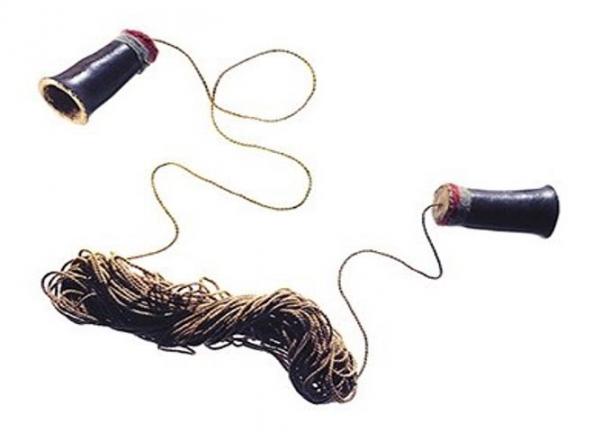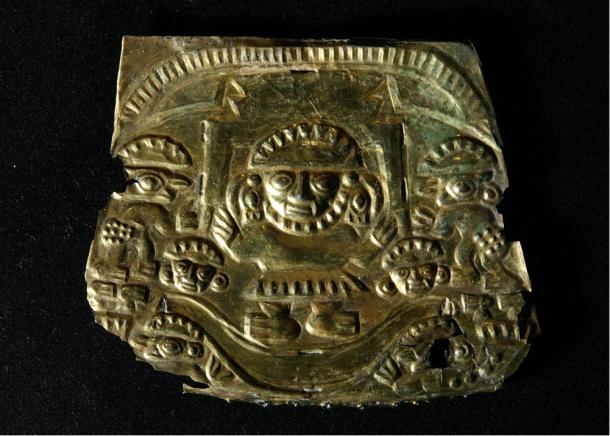1,200-Year-Old Telephone, Amazing Invention of the Ancient Chimu Civilization
A 1,200-year-old telephone, a marvel of ancient invention, surprises almost all who hear about it. Reportedly found in in the ruins of Chan Chan, Peru, the delicate communication artifact is known as the earliest example of telephone technology in the Western Hemisphere.
This seemingly out-of-place-artifact is evidence of the impressive innovation of the coastal Chimu people in the Río Moche Valley of northern Peru. Ramiro Matos, curator of the National Museum of the American Indian (NMAI) told Smithsonian, “This is unique. Only one was ever discovered. It comes from the consciousness of an indigenous society with no written language .”

How was the Chimu Telephone Made?
The early “telephone” appears to be a rudimentary speech transmission device, much like the “lover’s telephone” that has been known for hundreds of years, but which became popular in the 19th century.
The old lover’s telephone was usually comprised of tin cans connected with string, used to speak back and forth; and mostly seen as a novelty. However the ancient Chimu device, described as an instrument, is composed of two gourd tops bound with a length of cord.
The gourds, each 3.5 inches (8.9 centimeters) long are coated in resin and act as transmitters and receivers of sound. Around each of the gourd bases is a stretched-hide membrane. The 75-foot (22.8 meter) line connecting the two ends is made of cotton-twine.The simplicity of the device disguises its archaeological implications.

The Mystery of the Precious Ancient Telephone
This one-of-a-kind artifact reportedly predates the earliest research into telephones from 1833 (which began with non-electric string devices) by more than a thousand years.
The gourd-and-string device is too fragile to physically test, but researchers can piece together how the instrument might have worked. What they must continue to speculate on, however, is how the Chimu used this ancient phone: what was its purpose?
As the Chimu are known to have been a top-down society , it stands to reason that only the elite or priest class would have been in possession of such a valuable instrument, posits Matos. The precious telephone, with the seemingly magical ability to channel voices across space to be heard directly in the ear of the receiver was, “a tool designed for an executive level of communication,” according to Matos.
There might have been many applications for this old phone, such as communication between novices or assistants and their higher-ranking elites through chambers or anterooms. No face-to-face contact would have been needed, preserving status and ensuring security.
Like many other ancient marvels , the Chimu telephone might also have been a device to astound the faithful . Disembodied voices emitting from a hand-held object might have shocked and convinced people of the importance and station of the upper class or priests.
Or, there are some who consider the gourd and twine object as merely a child’s toy. If such novelties are not our modern sacred objects, why must they have been believed to be religious items or priestly tools to humans of the past?
The artifact was in the possession of Baron Walram V. Von Schoeler, a Prussian aristocrat, who is less flatteringly described as a “shadowy Indiana Jones-type adventurer.” He participated in many excavations in Peru in the 1930s, and may have dug up the artifact himself from the ruins of Chan Chan .
He distributed his collection among various museums, and the artifact eventually ended up at the storage facility of the National Museum of the American Indian in Maryland, USA, where it is treated delicately, and preserved in a temperature controlled environment as one of the museum’s greatest treasures.

Signs of a Skillful, Inventive People
Matos, an anthropologist and archaeologist specializing in the study of the central Andes explained, “The Chimu were a skillful, inventive people,” who were an impressive engineering society. This can be shown by their hydraulic canal-irrigation systems and their highly detailed, elaborate metalwork and artifacts.

The Chimu were the people of the Kingdom of Chimor, and their beautiful capital city was Chan Chan (translated as Sun Sun ), a sprawling mud brick complex —the largest such adobe site in the world— and it was the largest city in Pre-Columbian South America.
Chan Chan was almost 20 square kilometers (7.7 square miles), and was inhabited by 100,000 residents during its height around 1200 AD. The entire city was made from shaped and sun-dried mud, and was elaborately decorated with sculptures, reliefs, and wall carvings on almost every surface.

The Chimu culture arose about 900 AD, but it was eventually conquered by the Inca around 1470 AD.The Chimu telephone, and many other amazing ancient technologies, remind us that ancient cultures were capable of marvelous inventions , ideas, and creations long before our ‘sophisticated’ modern societies dreamed them up (sometimes for a second time).
